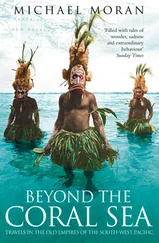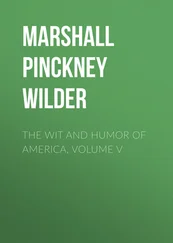Next to tobacco, the most important culture of the valley of Cumanacoa is that of indigo. The manufacturers of Cumanacoa, of San Fernando, and of Arenas, produce indigo of greater commercial value than that of Caracas; and often nearly equalling in splendour and richness of colour the indigo of Guatimala. It was from that province that the coasts of Cumana received the first seeds of the Indigofera anil,* which is cultivated jointly with the Indigofera tinctoria. (* The indigo known in commerce is produced by four species of plants; the Indigofera tinctoria, I. anil, I. argentea, and I. disperma. At the Rio Negro, near the frontiers of Brazil, we found the I. argentea growing wild, but only in places anciently inhabited by Indians.) The rains being very frequent in the valley of Cumanacoa, a plant of four feet high yields no more colouring matter than one of a third part that size in the arid valleys of Aragua, to the west of the town of Caracas.
The manufactories we examined are all built on uniform principles. Two steeping vessels, or vats, which receive the plants intended to be brought into a state of fermentation, are joined together. Each vat is fifteen feet square, and two and a half deep. From these upper vats the liquor runs into beaters, between which is placed the water-mill. The axletree of the great wheel crosses the two beaters. It is furnished with ladles, fixed to long handles, adapted for the beating. From a spacious settling-vat, the colouring fecula is carried to the drying place, and spread on planks of brasiletto, which, having small wheels, can be sheltered under a roof in case of sudden rains. Sloping and very low roofs give the drying place the appearance of hot-houses at some distance. In the valley of Cumanacoa, the fermentation of the plant is produced with astonishing rapidity. It lasts in general but four or five hours. This short duration can be attributed only to the humidity of the climate, and the absence of the sun during the development of the plant. I think I have observed, in the course of my travels, that the drier the climate, the slower the vat works, and the greater the quantity of indigo, at the minimum of oxidation, contained in the stalks. In the province of Caracas, where 562 cubic feet of the plant slightly piled up yield thirty-five or forty pounds of dry indigo, the liquid does not pass into the beater till after twenty, thirty, or thirty-five hours. It is probable that the inhabitants of Cumanacoa would extract more colouring matter if they left the plants longer steeping in the first vat.* (* The planters are pretty generally of opinion, that the fermentation should never continue less than ten hours. Beauvais-Raseau, Art de l'Indigotier page 81.) During my abode at Cumana I made solutions of the indigo of Cumanacoa, which is somewhat heavy and coppery, and that of Caracas, in sulphuric acid, in order to compare them, and the solution of the former appeared to me to be of a much more intense blue.
The plain of Cumanacoa, spotted with farms and small plantations of indigo and tobacco, is surrounded with mountains, which towards the south rise to considerable height. Everything indicates that the valley is the bottom of an ancient lake. The mountains, which in ancient times formed its shores, all rise perpendicularly in the direction of the plain. The only outlet for the waters of the lake was on the side of Arenas. In digging foundations, beds of round pebbles, mixed with small bivalve shells, are found; and according to the report of persons worthy of credit, there were discovered, thirty years ago, at the bottom of the ravine of San Juanillo, two enormous femoral bones, four feet long, and weighing more than thirty pounds. The Indians imagined that these were giants' bones; whilst the half-learned sages of the country, who assume the right of explaining everything, gravely asserted that they were mere sports of nature, and little worthy of attention; an opinion founded on the circumstance that human bones decay rapidly in the soil of Cumanacoa. In order to decorate their churches on the festival of the dead, they take skulls from the cemeteries on the coast, where the earth is impregnated with saline substances. These pretended thigh-bones of giants were carried to the port of Cumana, where I sought for them in vain; but from the analogy of some fossil bones which I brought from other parts of South America, and which have been carefully examined by M. Cuvier, it is probable that the gigantic femoral bones of Cumanacoa belonged to elephants of a species now extinct. It may appear surprising that they were found in a place so little elevated above the present level of the waters; since it is a remarkable fact, that the fragments of the mastodons and fossil elephants which I brought from the equinoctial regions of Mexico, New Grenada, Quito, and Peru, were not found in low regions (as were the megatherium of Rio Luxan* (* One league south-east from the town of Buenos Ayres.) and Virginia,* (* The megatherium of Virginia is the megalonyx of Mr. Jefferson. All the enormous remains found in the plains of the new continent, either north or south of the equator, belong, not to the torrid, but to the temperate zone. On the other hand, Pallas observes that in Siberia, consequently also northward of the tropics, fossil bones are never found in mountainous parts. These facts, intimately connected together, seem calculated to lead to the discovery of a great geological law.) the great mastodons of the Ohio, and the fossil elephants of the Susquehanna, in the temperate zone), but on table-lands having from six to fourteen hundred toises of elevation.
As we approached the southern bank of the basin of Cumanacoa, we enjoyed the view of the Turimiquiri.* (* Some of the inhabitants pronounce this name Tumuriquiri, others Turumiquiri, or Tumiriquiri. During the whole time of our stay at Cumanacoa, the summit of this mountain was covered with clouds. It appeared uncovered on the evening of the 11th of September, but only for a few minutes. The angle of elevation, taken from the great square of Cumanacoa, was 8 degrees 2 minutes. This determination, and the barometrical measurement which I made on the 13th, may enable us to fix, within a certain approximation, the distance of the mountain at six miles and a third, or 6050 toises; admitting that the part uncovered by clouds was 850 toises above the plain of Cumanacoa.) An enormous wall of rocks, the remains of an ancient cliff, rises in the midst of the forests. Farther to the west, at Cerro del Cuchivano, the chain of mountains seems as if broken by the effects of an earthquake. The crevice is more than a hundred and fifty toises wide, is surrounded by perpendicular rocks, and is filled with trees, the interwoven branches of which find no room to spread. This cleft appears like a mine opened by the falling in of the earth. It is intersected by a torrent, the Rio Juagua, and its appearance is highly picturesque. It is called Risco del Cuchivano. The river rises at the distance of seven leagues south-west, at the foot of the mountain of the Brigantine, and it forms some beautiful cascades before it spreads through the plain of Cumanacoa.
We visited several times a small farm, the Conuco of Bermudez, opposite the Risco del Cuchivano, where tobacco, plantains, and several species of cotton-trees,* are cultivated in the moist soil (* Gossypium uniglandulosum, improperly called herbaceum, and G. barbadense.); especially that tree, the cotton of which is of a nankeen colour, and which is so common in the island of Margareta.* (* G. religiosum.) The proprietor of the farm told us that the Risco or crevice was inhabited by jaguar tigers. These animals pass the day in caverns, and roam around human habitations at night. Being well fed, they grow to the length of six feet. One of them had devoured, in the preceding year, a horse belonging to the farm. He dragged his prey on a fine moonlight night, across the savannah, to the foot of a ceiba* of an enormous size. (* Bombax ceiba: five-leaved silk-cotton tree.) The groans of the dying horse awoke the slaves of the farm, who went out armed with lances and machetes.* (* Great knives, with very long blades, like a couteau de chasse. No one enters the woods in the torrid zone without being armed with a machete, not only to cut his way through the woods, but as a defence against wild beasts.) The tiger, crouching over his prey, awaited their approach with tranquillity, and fell only after a long and obstinate resistance. This fact, and many others verified on the spot, prove that the great jaguar* of Terra Firma (* Felis onca, Linn., which Buffon called panthere oillee, and which he believed came from Africa.), like the jaguarete of Paraguay, and the real tiger of Asia, does not flee from man when it is dared to close combat, and when not intimidated by the number of its assailants. Naturalists at present admit that Buffon was entirely mistaken with respect to the greatest of the feline race of America. What Buffon says of the cowardice of tigers of the new continent, relates to the small ocelots.* (* Felis pardalis, Linn., or the chibiguazu of Azara, different from the Tlateo-Ocelotl, or tiger-cat of the Aztecs.) At the Orinoco, the real jaguar of America sometimes leaps into the water, to attack the Indians in their canoes.
Читать дальше












